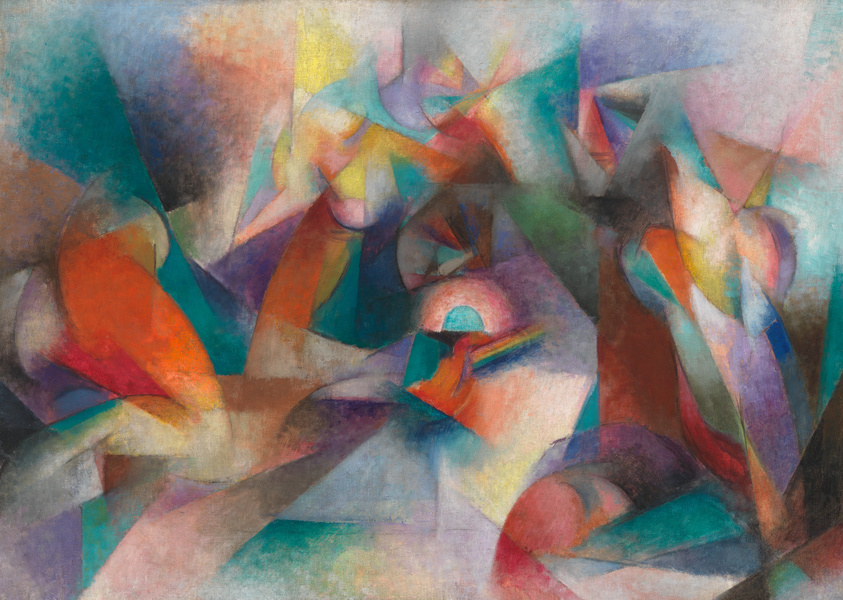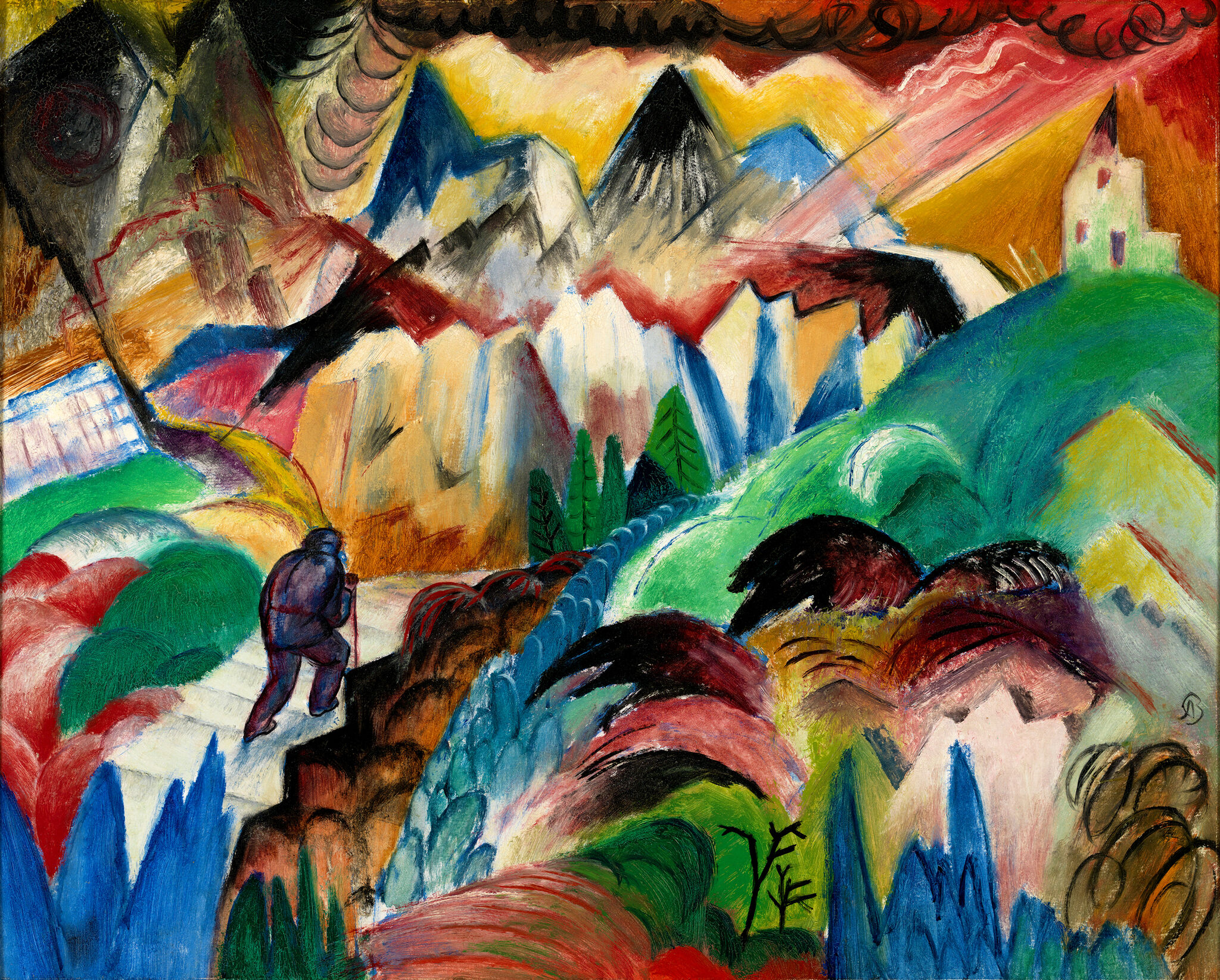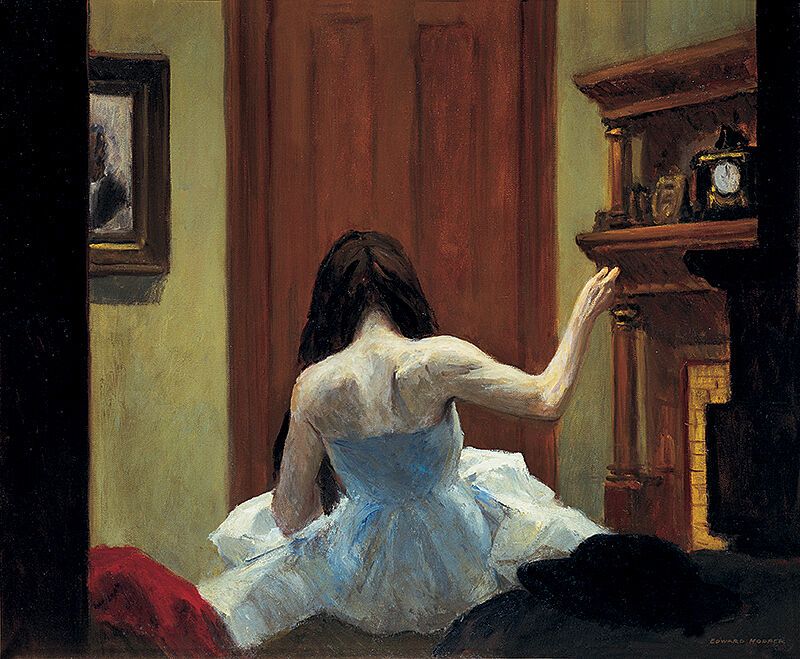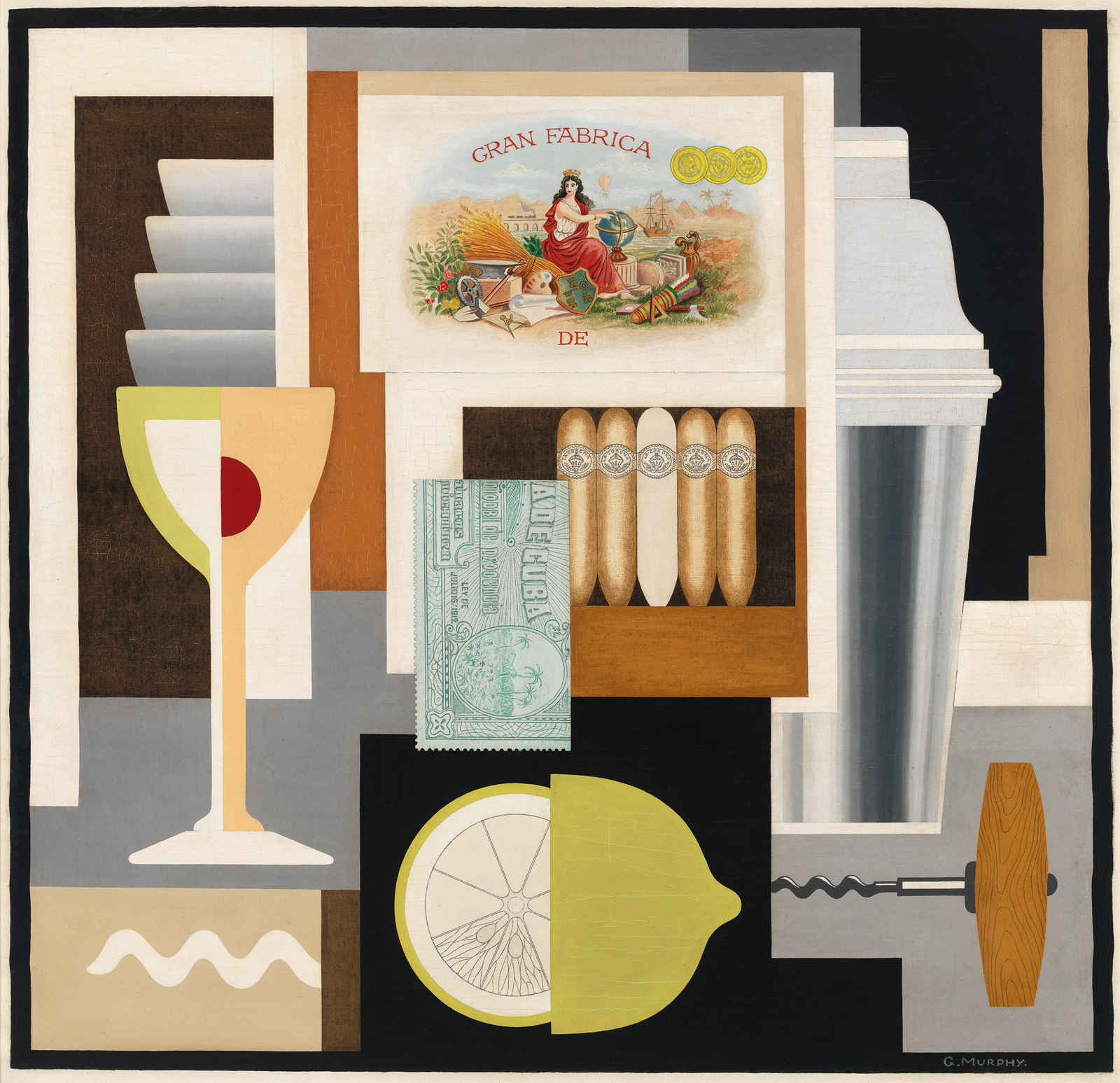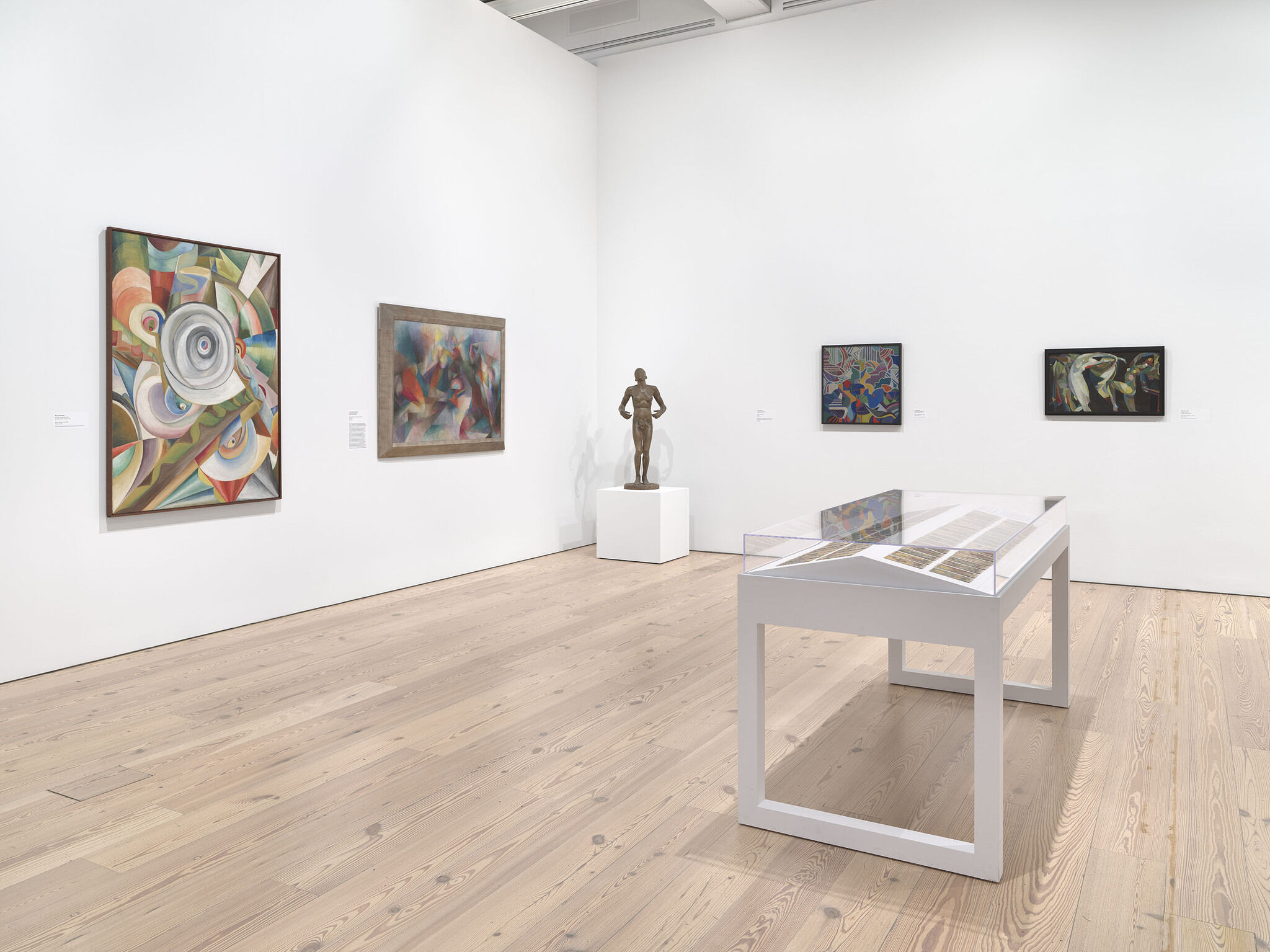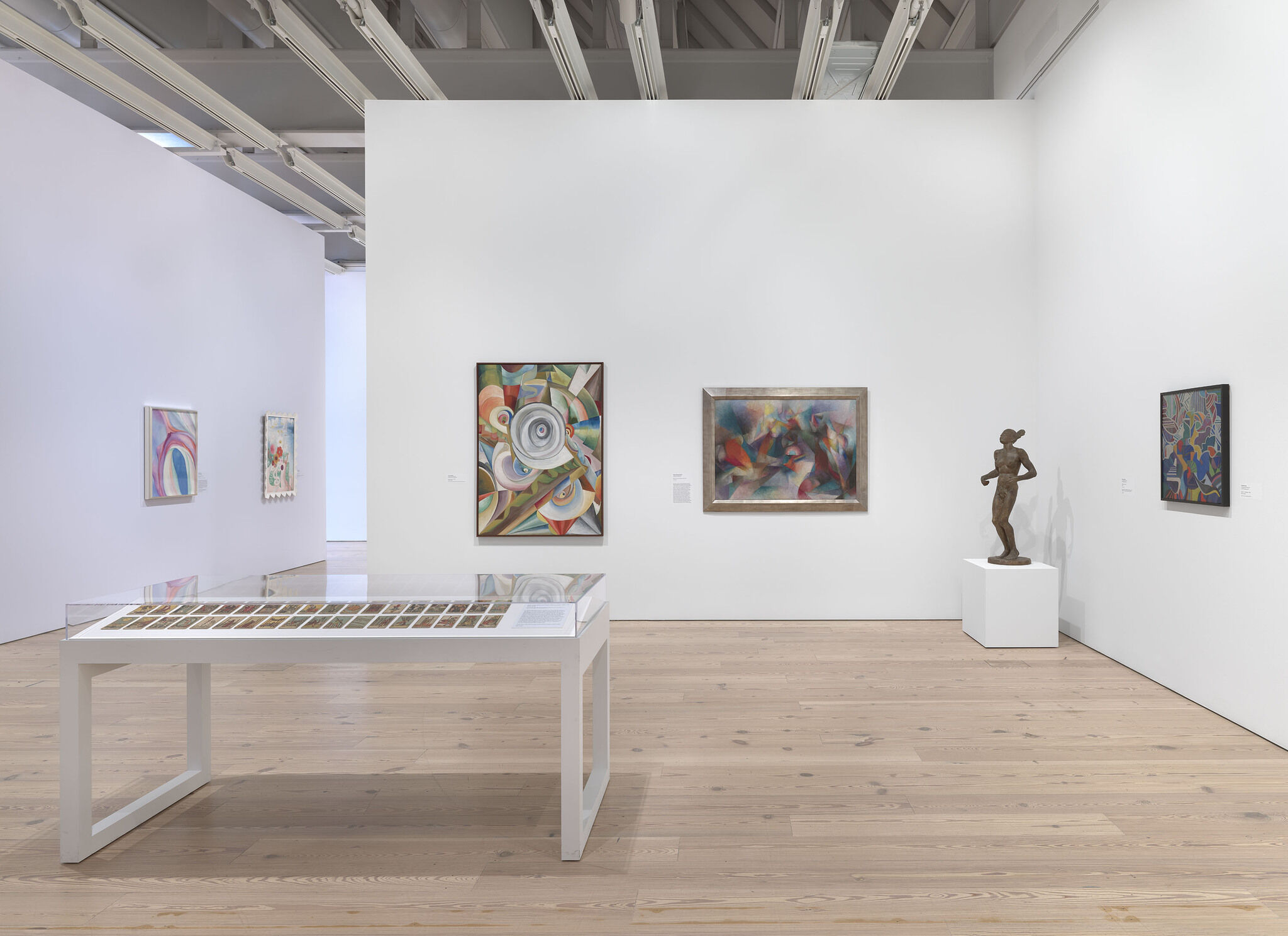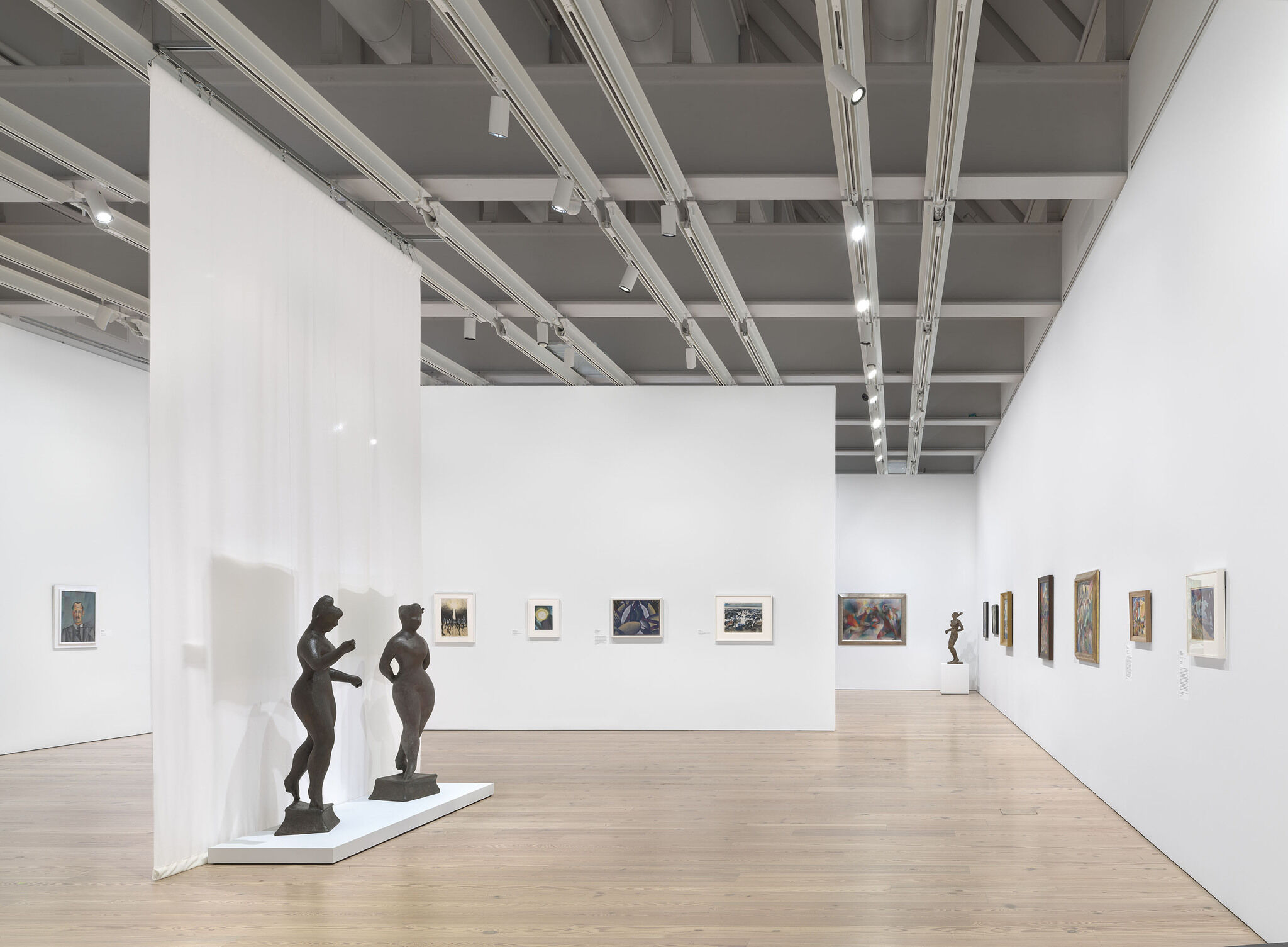Shortly before World War I, Stanton Macdonald-Wright and fellow artist Morgan Russell coined the term Synchromy to distinguish their kaleidoscopic canvases from other early manifestations of modernism. Meaning “with color,” the word also evokes “symphony” and thus suggests a relationship to music—the most abstract and, for Macdonald-Wright, ecstatic of art forms. Macdonald-Wright made some completely abstract works, but by 1916 he began to utilize a style of color-infused figuration, as in this painting. Decades later, he said that the picture was “based—in its forms & arrangement & subject matter—on an opium smoking group.” A quartet of figures appears among the shifting colors, with the glow of opium radiating to the right of center. A face, a bent elbow, a bulbous thigh, and an uplifted arm emerge from the richly hued planes. While the blue and green of the title predominate, a full range of hues fans out across the canvas.
Not on view
Date
1918
Classification
Paintings
Medium
Oil on linen
Dimensions
Overall: 36 1/8 × 50in. (91.8 × 127 cm)
Accession number
52.8
Credit line
Whitney Museum of American Art, New York; purchase
Rights and reproductions
© 2010 Macdonald-Wright Estate

